From Lebanon to Pilisvörösvár: The story of the gold-smuggler's Ferrari
Index recently published a series of pictures by photojournalist Tamás Urbán from 1977 about the famous Hungarian car-dealer of the socialist era, the Merkur lot. The photos allowed a rare glimpse into an exciting segment of Hungary's socialist era, the world of second-third-fourth hand used car dealers and their customers. One of the most exciting pictures is one that shows a rare motoric gem, a Ferrari Daytona that could be worth north of a million Euros.
One of the pictures showing a soldier marvelling at the Ferrari had been available on Fortepan, a website collecting Hungarian archive pictures, therefore the surreal phenomenon had been much on the minds of Hungarian car-enthusiasts in the past years. How did the car get into the country? Who imported it? Who bought it? What happened to it? Hungarian fans of exotic cars had been losing quite a lot of sleep over these questions lately.
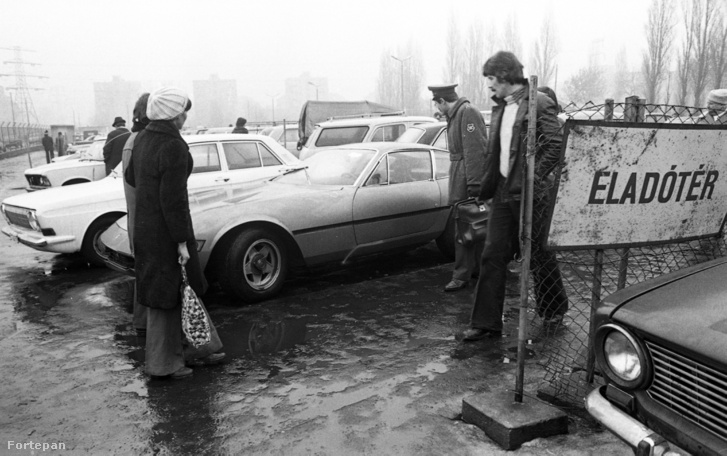
In 2015, Index's partner-site, Totalcar wrote a blog post about the picture on Fortepan, where some eyewitnesses revealed previously unknown information in the comments:
"It was in Röpi (Merkur's Röppentyű street lot), a metallic blue Daytona, I remember it, I sat in it... Some Arabic guy drove it from Vienna, but the dogs caught on to the smell of drugs behind the door cards, and the car was confiscated. We wanted to buy it with V., I remember its first price was around 140, and then it was 120 later on. We had to think about it, as it was driven to pieces - it was not roadworthy anymore, it had Plexiglas side windows, the dashboard was just a simple aluminium plate, switches from a Polski Fiat, aluminium-plated fake leather seats, Plexiglas headlight cover, etc... Sadly we did not have the necessary knowledge about Ferraris at the time, and the car's simple, almost primitive trim scared us away, but it was a track car - its value was many times higher than your average road-version. It was supposedly taken to Pécs, but its refurbishment would have cost a fortune, they said it was sold in the USA years later."
"As I far as I can remember it was sold for 360,000 Forints (I earned around 1800 a month at the time), and as far as I know it was a technician from the Révész street repairs shop who bought it and left the country for the West with it, and in all likelihood this car was also confiscated by customs officers upon suspicions of smuggling - maybe the buyer was also commissioned by the original owner to get the car back..."
"I have no info about what happened to the car afterwards, last time I saw it at the lot. The original owner, a half-Hungarian half-Lebanese guy was in prison for two years after he was charged with crimes he did or did not do, and then was expelled from the country. They confiscated everything he owned, he had two more cars other than the Ferrari, and they ransacked his flat as well. He tried to return to the country once again, but he was turned back at the airport and we haven't heard about him ever since. I haven't seen the car's paperwork, I don't know what happened to it. One thing is for sure, he did not get it back."
A great car-themed Instagram-account, deadcarwalking posted the Fortepan picture last November, and the account's owner, László, added some extra information he managed to piece together, and the comments there also had some eyewitness accounts:
"It used to belong to a Hungarian/Lebanese guy, with an Arabic numberplate and TST country code (does anyone know what that is?). I saw it first in downtown Budapest at the end of the sixties (they were made between 1968 and 1973) in Chiaro Blue metallic finish and with coio (brown) leather trim on the inside. Next time I saw it parked in the courtyard of the Budapest Regional Court, where it spent many years during the investigation. After its final confiscation, it was moved over to the Röppentyű street lot, but that's a different story..."
"It's good to see it after so many years, as I almost ended up owning it. I had the necessary permits at the Röppentyű lot, and my friend's father, who would have provided the loan for the purchase, saw that the tailpipe had some rust and ultimately refused to lend me the money. This way a representative of the original owner acquired it, and the young service technician supposed to drive it back to Vienna could not deal with the temptation, and crashed it into a million pieces. They say the bumper was filled with gold..."
After our Fortepan collection, József Likó contacted us, saying
"My father purchased the car at the Röppenytű street lot in 1977."
We asked József, who has been living in Germany since 2011, to tell us more about the car, and he was happy to oblige. Sadly, József Likó Sr. passed away in 2014, so the story of the Röppentyű street Ferrari Daytona could only be puzzled together from the retellings of friends and family.
From Lebanon to Budapest
The first owner of the car was a Lebanese Ferrari-dealer, a certain Elie F. Ayache. There were only 1284 Ferrari 365 GTB/4 Daytonas ever made, the one in question was no. 745, and its Azzurro Metallizato blue finish was quite unique. Ayache's dealership was in Sin-el-Fil in one of the eastern outskirts of Beirut. The larger-than-life Christian man not only owned a Ferrari dealership, but he was an avid collector as well according to many contemporary car magazines, but he lost a number of his cars and motorboats during the Lebanese civil war. It is unclear if he could to sell his Daytona before the war or found some other way to get it out of the country afterwards.
What we know is that the car was taken away from two middle-eastern people at the border. They tried to smuggle gold through the border - they poured melted gold in the inside of the front bumper and put it back after it solidified. But the customs officers noticed it, as the Ferrari Daytona was not exactly innocuous. The car was confiscated and the bumper was removed, which explain why Tamás Urbán's pictures feature an incomplete car.
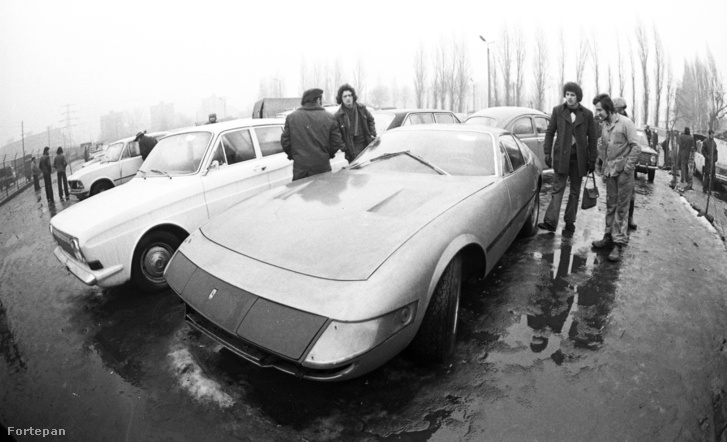
"At the time my father worked at the AFIT repairs shop in Révész street. The Merkur lot in Röppentyű street had been trying to find a buyer for the car for quite a while by then, rumours have it that the asking price was north of 300,000 Forints, but they dropped the price later on as nobody was buying it." József Likó from Pilisvörösvár could finally buy the exotic car for the price of 190,000 Forints. How did he have that amount of money which was considered astronomical at the time? "If I know well, my parents had a Fiat from Torino which was deducted from the Ferrari's price, there were a loan and some cash in there as well."
"In those times the family house in Pilisvörösvár with the separate building lot next to it was valued at around 70,000 Forints, so the car was considered to be rather expensive. I feel immense pride over the fact that my father, at the age of 25, had the necessary courage to buy this car. By the way, my grandparents and my mother did not support his decision, which is also a perspective one can understand. But he could buy that car, and to hold on to it for over a year."
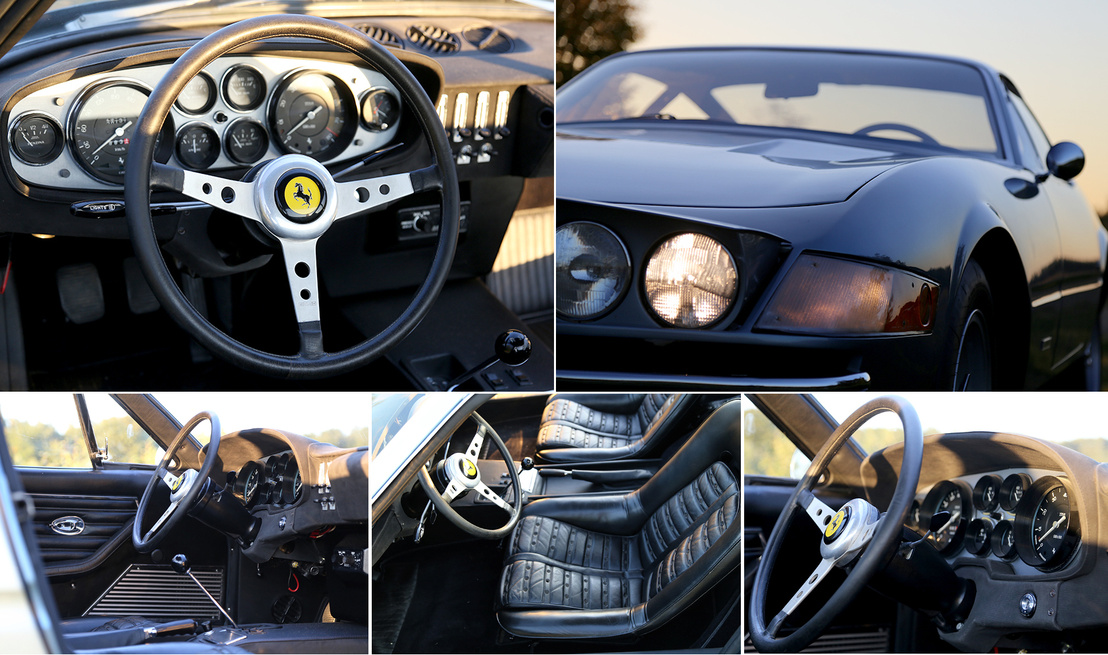
There are many differing reports about the state of the car; car magazine Autó-Motor reported the car's mechanical state to be 70%, whatever that may mean - the information most likely originated from Merkur officials. József Likó summarised the cars ailments as follows:
"Apart from the missing bumper, its starting motor wasn't working well, some cylinders weren't firing, and the tires were not in top condition either. You can imagine how much trouble fixing those problems meant in those times."
Most importantly though they managed to fix the engine, and the bumper was retrofitted there in the AFIT service. An interesting detail was the TST marking on the car. One thing is for sure: it was not a country code, it's more likely that the car was used for some kind of factory-run tests, performance analyses, or assessments of the car's on-track behaviour, probably in Maranello, way before it ended up in Beirut. Eyewitness accounts emphasising the car's no-frills insides could be pointing to that as well, the car was a really lean, weight-reduced example optimised for the racetrack.
But that ultimately did not matter, the run-down tires were much more of a problem. During those times, it was impossible to find tires that would fit a Ferrari Daytona. "My parents had some relatives living in France, so my father and my grandmother drove the car there to visit them. They bought tires in Baden-Baden Germany, but since they did not have enough money, they only managed to buy a set that was not fit for use at speeds specified in the car's factory data. Still, the four tyres cost 60,000 Forints," and the West-German tire salesman was not willing to fit the wheels on the car, Likó had to do it himself.
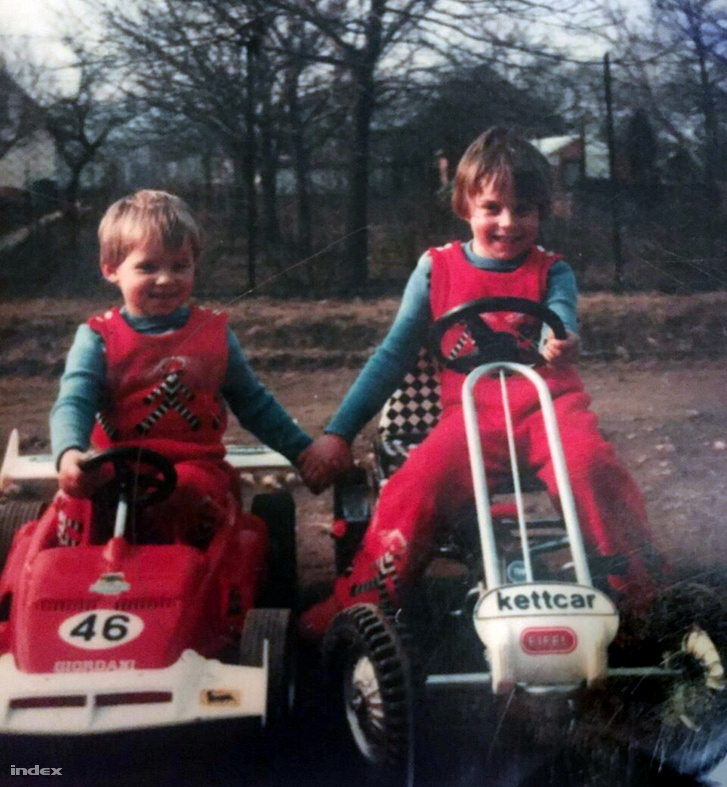
Sadly the family has no remaining photographs of the car. "The only picture that I remember was a Polaroid with the car, my father, and some of his colleagues from the Révész street shop on it. My father always kept that picture in his wallet, which he forgot on top of the car after he stopped for gas and never saw it again."
Still, it must have been quite an experience as a child to see a car in the garage the toy version of which would have incited massive envy amongst his contemporaries. "As I was only four at the time, I do not have such vivid memories of it. Except for a Budapest visit with the car, we were picking up my baby brother from the hospital. There were two little compartments behind the front seats, ideal for children our age. It's interesting how that stuck in my mind all through these years. Of course, the story of the car always came up in conversation, it was the talk of the family, and it even brought my dad some notoriety around the town as well, many knew and adored the car.
"The car's registration says my dad acquired it 10 May 1977, and he sold it to a gentleman living on Pasaréti road in Budapest on 27 October 1978. If I'm not mistaken the car sold for 230,000 Forints and the buyer soon left Hungary. We haven't heard about the car for the next 37 years."
The 15677 Daytona
József Likó Sr., the first Hungarian owner of the car passed away at the age of 62 in 2014 in Pilisvörösvár, and his son discovered the Daytona in a German car magazine that same year. It was up for auction. According to the description, the car was taken to Hungary from Lebanon in the second half of the 1970s, and then to Belgium through Germany.
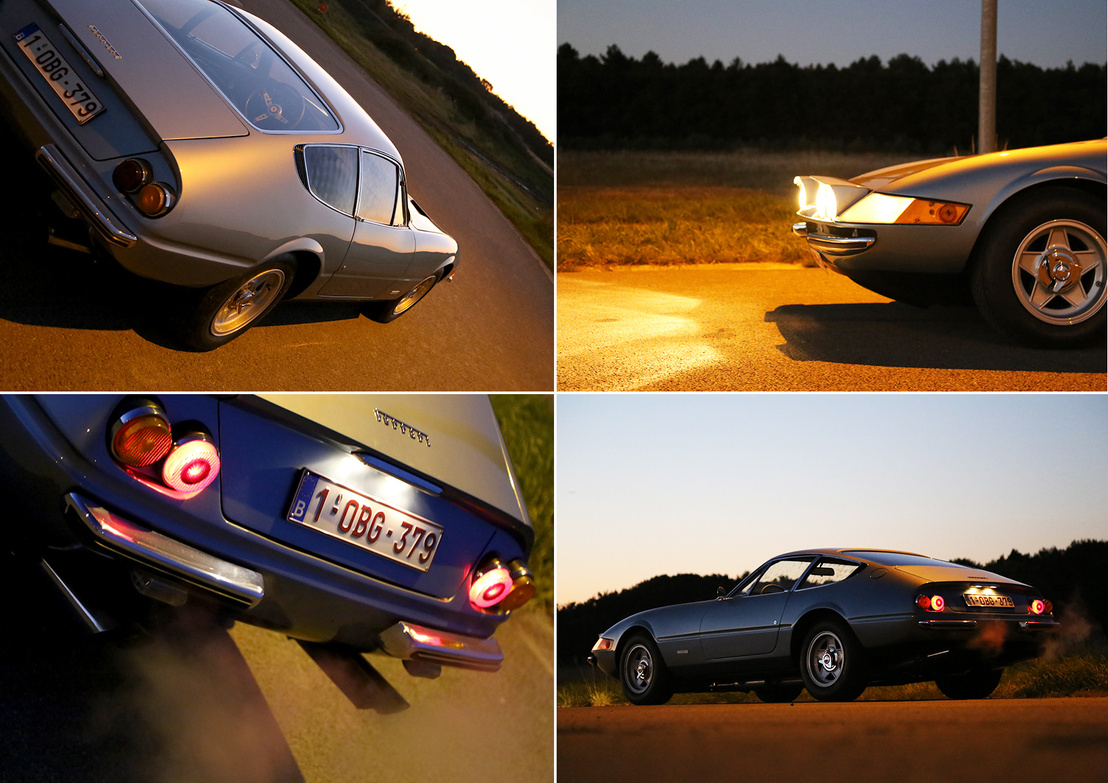
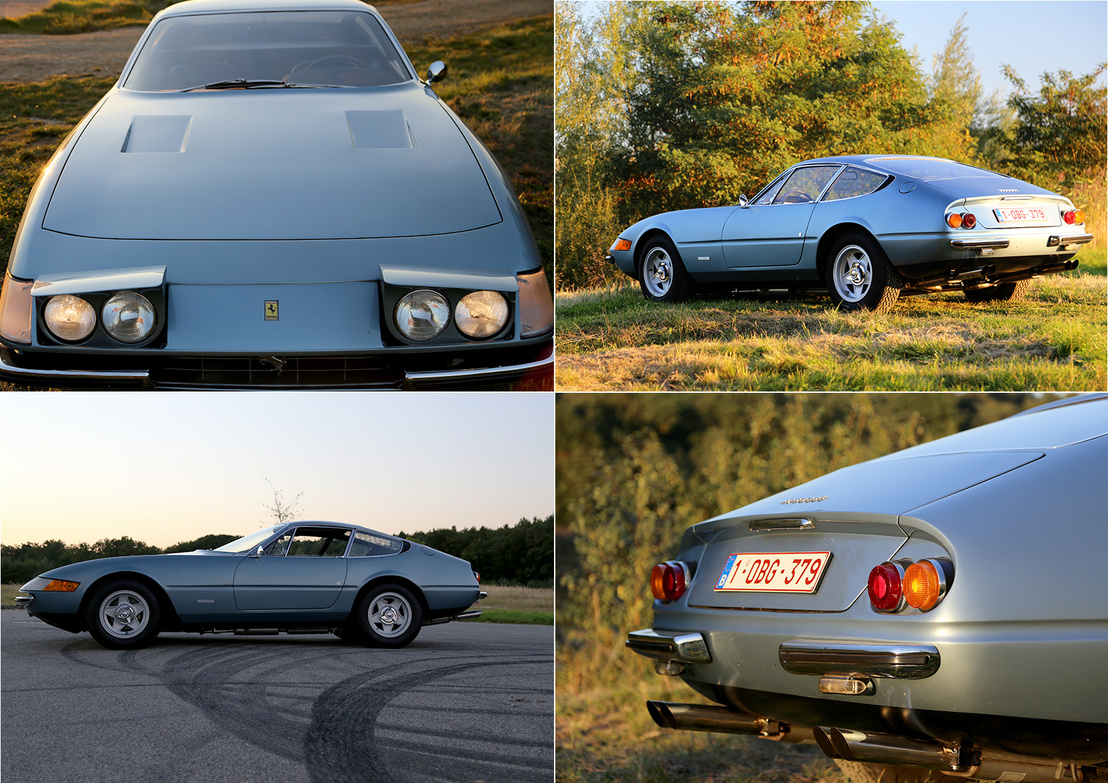
At that point, it was unsure if that was the same car. "I was almost certain that this is my father's Daytona. I called the dealership and told them my story, and they confirmed that it is likely to be the same vehicle, but they could only be a 100% sure if I had the car's chassis number, which I did not. I tried to contact the Central Registry Database, but they require at least to pieces of information about the car to give information: the name of the owner and the chassis number or license plate number. Sadly, I only had the car's make, model, and my father's data."
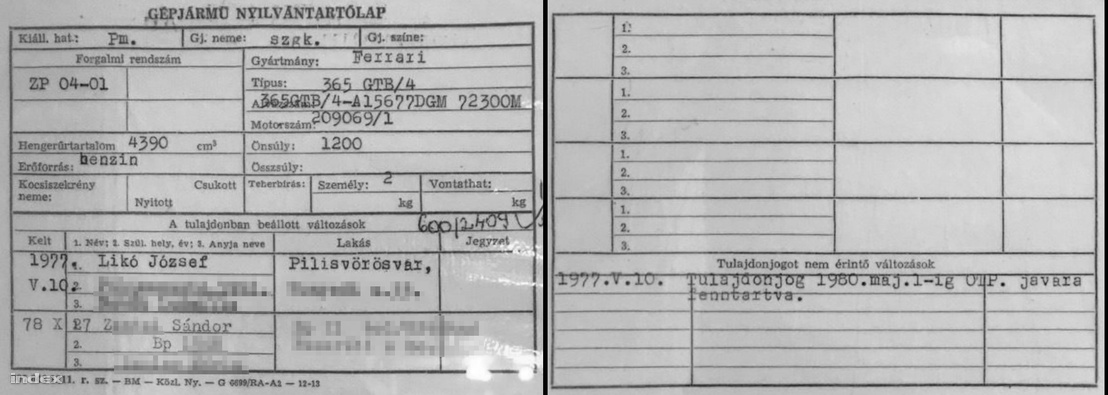
"Three years later I was talking with my godfather, and the Ferrari came up, and that I tried to get a copy of its registration, but couldn't. He instantly said the license plate number was ZP 04-01, and thus I had the two pieces of information necessary, and could finally acquire the registration."
After this, József could not get in touch with the German dealership, but as it turned out, the car was included in a classic car auction of Coys London. Their description says the car that was made to European specs left the Maranello factory on 5 April 1972 and was sent to the car dealership of Elie Ayache in the first half of the seventies. From there, it wound up in a small private collection, after which it was taken back to Europe in 1978 according to Coys, but they got that date wrong. In the end, it got a complete restoration in Belgium in 2009 after a short stint in Germany, but there is no information available about the car's history between 1978 when József Likó Sr. sold the car and its 2009 restoration.
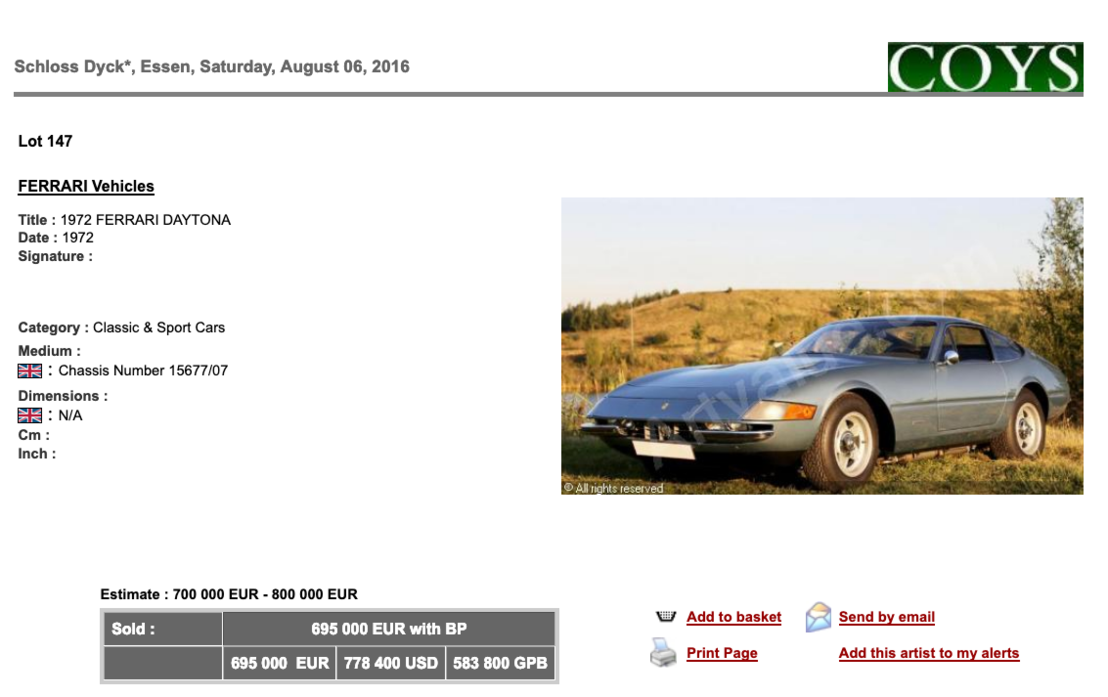
The chassis number on the website of the Coys auction house matched to the chassis number on the registration, therefore it is the same car beyond all doubts. The Ferrari was sold on 6 August 2016 at an auction in Germany (Schloss Dyck, Jüchen, you can find two pictures of the car here) for
695 000 Euros.
Hopefully, it's in good hands.
This article is the translation of the original published by Index in Hungarian.

Support the independent media!
The English section of Index is financed from donations.


